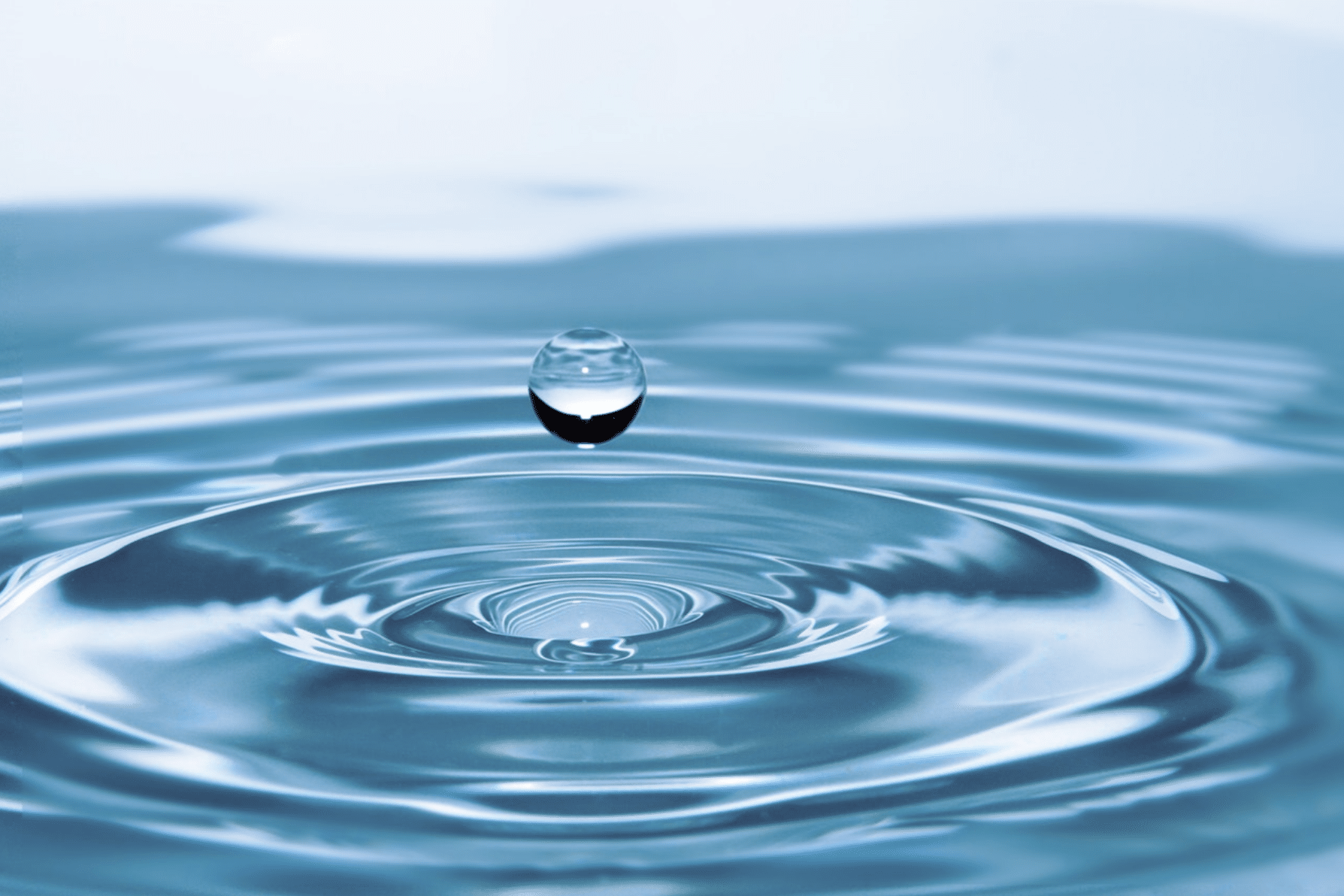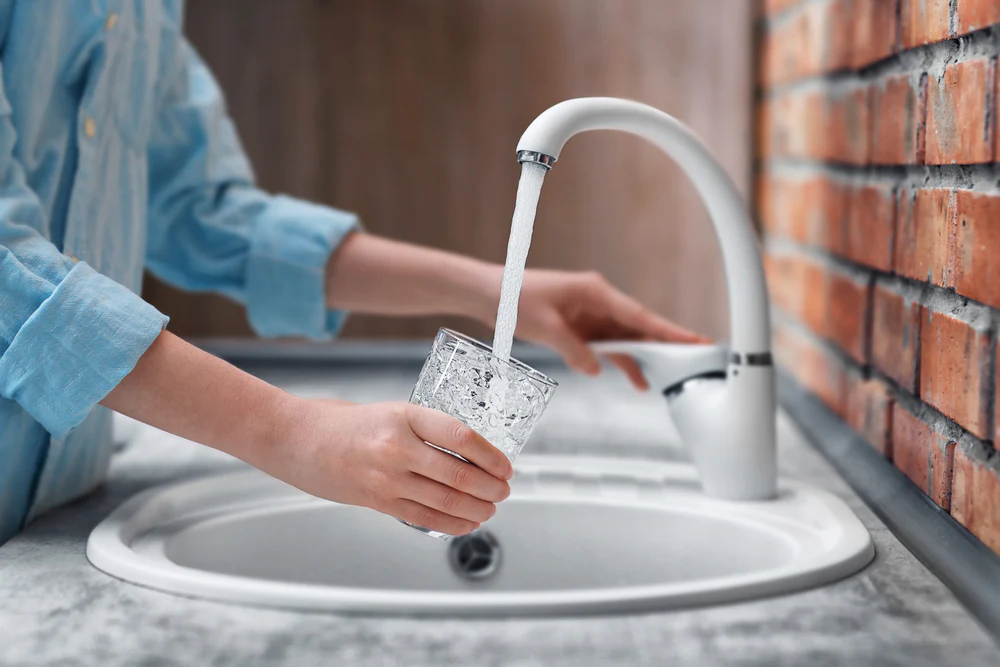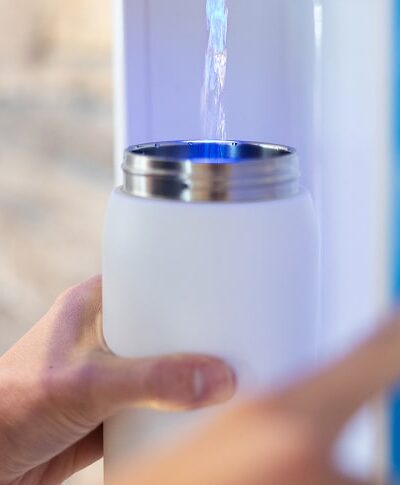We all know that it’s not a good idea to drink directly from a river, but it helps to know how this water gets purified before reaching your faucet. Water that has not gone through the water purification process is full of contaminants like bacteria, viruses, dirt, pesticides and other chemicals. Drinking such water can cause diarrhea and vomiting, or even more serious health risks.
Before you drink water, it should have gone through one or more of the water purification methods. These methods that make our water safe to drink and how do they remove dangerous contaminants to make our water clean and safe?
To answer these and many more questions, we’re going to review the different water purification types, including boiling, filtration, distillation and reverse osmosis. We’ll discuss the important differences between these popular drinking water purification methods and how people can use them to create different types of drinking water. Get ready for a crash course in everything you ever wanted to know about water purification methods.
Water Purification Method 1: Boiling
One way to purify water is by boiling it. It is a simple method that can kill germs and parasites. People have relied on this method for centuries to produce safe and sanitary water for cooking and drinking. You can think of it as a tried-and-true method of water purification.
When to Purify Water
Untreated and unsanitary water can come from natural water sources like lakes, rivers and streams. It can also come straight from the tap if it hasn’t been treated properly or if it has been exposed to contamination from chemicals or sewage. Even water that looks clean and clear can still harbor bacteria that pose health risks. For this reason, it’s so important to purify any water that has not been treated or has been exposed to contaminants.
Boiling water as a form of purification can be an excellent option in several situations when you don’t have bottled water. You can do it when you’re camping and need water for drinking or cooking. It’s recommended when you’re in a country that has unsanitary drinking water. You should also use boiled water if your local water supply has become contaminated due to a hurricane, flood or water main break.
How Do You Boil Water to Make It Safe?
When it comes to boiling water as a means of purification, you need to know how long to do it. If you don’t do it long enough, the method could be completely ineffective, which could leave you and your family sick from water pollution.
To properly boil water, you need a heat source like a stove and something to hold the water like a pot. The United States Environmental Protection Agency (EPA) recommends bringing the water to a rolling boil and keeping it there for at least one minute. If you are at an altitude above one mile, you should keep the water at a rolling boil for at least three minutes.
If you notice your water is cloudy, you will need to filter it before boiling it. This will prevent you from drinking any dirt or debris. You can use coffee filters, cloth or paper towels as a filter. Simply, pour the water through the filter as many times as it takes for the water to become clear. Keep in mind, you will still need to boil it to remove microscopic pathogens.
Water Purification Method 2: Filtration
Filtration is an excellent water purification method. If you’re used to drinking tap water, it helps to know how your water is filtered before it reaches your faucet. Filtration is one of the oldest techniques and many municipal public water systems rely on it today to purify drinking water before it comes to your tap. This process simply involves separating solid debris from the water bypassing the liquid through a filter.
The Basics of Water Filtration
As mentioned above, the concept of filtration is simple. You slowly allow water to pass through a filter to remove any solid impurities like dirt, dust or other debris. The filter typically consists of some porous materials like cotton or glass wool, cloth, paper, gravel or sand. The size of the pores of the filter determines the size of particles that can pass through.
Filtration allows water to pass through the filter, leaving behind any solids. For the best results, the filtration process is usually done multiple times. This ensures that the filter removes any unwanted particles from the water.
When you’re filtering water yourself, you will typically use materials like cloth or paper of some kind. In the past, municipal water treatment plants relied exclusively on filters that were made of charcoal, gravel or sand. The process of filtering water through such a granular bed is what we call slow sand filtration.
Modern Water Filtration
Modern filtration systems at municipal water treatment plants build on slow sand filtration and enhance it by incorporating a multimedia filter. This filter is primarily made of carbon, which creates a solid block. This is different than the unstructured and loose sand filters.
In addition to the solid carbon, modern water filters also include other substances to help clean the supply using chemical and physical processes. On the chemical side, the multimedia filter absorbs the contaminants. The carbon’s atomic charge makes any particles in the water lose their bond with water and attach to the filter. Physically, the multimedia filter traps particles that are bigger than water in its pores. This physical process is like slow sand filtration.
Typically, the water goes through several stages of multimedia filters to make sure it has been properly purified. In the end, the water emerges from the multimedia filter, free of dirt, debris, and contaminants of all sizes.
Water Purification Method 3: Distillation
You may have heard of distillation as a method to make alcoholic beverages like whiskey and gin. However, it is also a way to purify water. This process removes many contaminants from the water, but it also can remove essential minerals. As a result, many experts do not recommend that people exclusively drink distilled water.
The Basics of Water Distillation
Distillation purifies water by using a heat source to vaporize it. When the water becomes a vapor, it separates the liquid from any contaminants or debris that can appear in surface water or groundwater.
The process of distillation is simple. Water has a much lower boiling point than solids and minerals. As such, you can distill water by taking untreated water and heating it until the water reaches its boiling point and starts to turn into vapor. By keeping the heat at a constant temperature, the water continues to vaporize, but the solids do not. The process also removes microscopic and disease-causing organisms like bacteria and viruses.
After all the water is a vapor, you place it in a condenser. When it cools, the water turns back into a liquid. To ensure the water is free of contamination, people often repeat the distillation process multiple times.
The Role of Solar Power in Distillation
People have long experimented with using solar power to distill water. This option is appealing because it is an efficient and eco-friendly alternative to heating water using traditional power sources.
However, solar power also has drawbacks when it comes to distillation. The biggest issue is that it only works for small amounts of liquids. Additionally, the time it takes to distill water multiple times is greater when using solar power than it is when you use a traditional source of power.
Water Purification Method 4: Chlorine
You might think of swimming pools and water parks when chlorine comes to mind, but it is also a way to purify drinking water. Chlorine has an important purpose in water purification. It removes harmful and deadly microorganisms from our tap water, so 98% of U.S. water utilities use it to purify drinking water.
The Role of Chlorine
There’s a good reason why people think of filtering and adding chlorine to drinking water as one of the millennium’s most significant advances in public health. It has virtually eliminated outbreaks of waterborne diseases in the United States and developed countries around the world.
Chlorine does an excellent job of killing microscopic pathogens that can live in our water supply. Health officials have added chlorine to our drinking water since 1908. As a result, cholera, dysentery, and typhoid fever are diseases we think of as old-fashioned illnesses of the Oregon Trail rather than concerns of the modern-day.
How Chlorine Purifies Water
Chlorine is the only disinfectant that can effectively kill microorganisms like bacteria during the water treatment process. It also maintains water quality on its journey from the treatment plant to your tap.
Although we have been using chlorine for over a century, we’re still not sure how it kills or inactivates microorganisms. After decades of research, scientists think that chlorine works by attacking the cell wall of bacteria. They think that exposing a microorganism to chlorine destroys its cell wall by biochemically, chemically and physically changing it. After that, it stops the cell’s vital functions and kills it.
Is Chlorine Safe for Humans?
You might be wondering why chlorine can kill microorganisms and not harm humans. The concentration of chlorine in our drinking water is enough to kill small and simple microorganisms. However, humans are much bigger and more complex, so small doses of chlorine are not enough to harm us.
To keep us safe, water utilities carefully regulate chlorine levels. They make sure they are high enough to kill dangerous microorganisms but low enough to not hurt humans and animals. Doing so ensures that we have safe drinking water for everyone.
Water Purification Method 5: Reverse Osmosis
Reverse osmosis sounds like a complex scientific term, not necessarily a way to create safe drinking water. However, that is exactly what it can do for us. Osmosis is when molecules pass through a semipermeable membrane from a less concentrated solution to a more concentrated one. Reverse osmosis is simply the opposite.
How Reverse Osmosis Works
A reverse osmosis system has three canisters. One is the membrane and the other two contain carbon filters. The first step of water purification using reverse osmosis is pre-filtration. We remove larger sediment and reduce chlorine using a sediment filter, or carbon block filter. This protects the membrane from becoming damaged or clogged.
The next step involves using pressure to force water through the semipermeable reverse osmosis membrane. This membrane is made of synthetic plastic and it allows water to pass through. However, it does not allow calcium, chlorine, sodium, bacteria, viruses and other contaminants to pass.
The final step happens after filtration. During this step, the water goes through another carbon filter, or post-filter, that removes any contaminants that may have escaped the membrane. The result is fresh and purified water that you can use for drinking, cleaning, bathing, and laundry.
What Can Reverse Osmosis Remove
Reverse osmosis is famous for its ability to remove a variety of contaminants like lead, arsenic, nitrates, chromium, radium, bacteria, and viruses. Not only that, but the reverse osmosis process can also help desalinate water. This process can turn saltwater into safe drinking water.
A Look at FloWater’s 7X Advanced Purification
FloWater combines several of the above water purification methods to provide the purest water on the market. Our 7x Advanced Purification system removes up to 99% of impurities and contaminants from your existing water source resulting in great tasting purified drinking water. Our water purification system is broken down into seven different phases. The first three phases utilize different types of filtration to remove debris from the water. We start with a sediment filter that removes dirt, dust, rust, and other suspended solids that might exist in your tap water or pipes. We then use a carbon filter to remove smaller particles such as chlorine, radon, hydrogen sulfide, and heavy metals. This filter also removes any odors or unpleasant taste. The third filter we use is an advanced osmosis filter. As discussed above, this filter uses a semi-permeable membrane to remove contaminants like fluoride, bacteria, lead, viruses, heavy metals, pharmaceuticals, pesticides, herbicides, and dissolved solids. From there, we improve the water with trace elements and electrolytes. Activated oxygen is added to the water to help sanitize the tank and increase the oxygen levels in your blood and muscles. Alkaline is added to raise the pH level of the water and neutralize acidity in your body and relieve stress on your internal organs. Electrolytes are added to support your immune defense, cell repair, bone strength, and to keep you energized. Lastly, the water is passed through a coconut carbon filter to give it a delicious and fresh taste.
FloWater is striving to provide the world with safer and healthier water. If you are interested in taking your water to the next level and improving the quality of the water you consume, reach out to FloWater today!
Sources:
https://traveltips.usatoday.com/long-boil-water-purification-62933.html
https://www.epa.gov/ground-water-and-drinking-water/emergency-disinfection-drinking-water
https://www.reference.com/science/filtration-work-753530f40075be21
http://historyofwaterfilters.com/filtration-process.html
http://historyofwaterfilters.com/distillation-process.html
https://www.scientificamerican.com/article/how-does-chlorine-added-t/
http://www.water-rightgroup.com/blog/how-do-reverse-osmosis-drinking-water-systems-work/
https://science.howstuffworks.com/reverse-osmosis.htm
https://drinkflowater.com/the-water/





